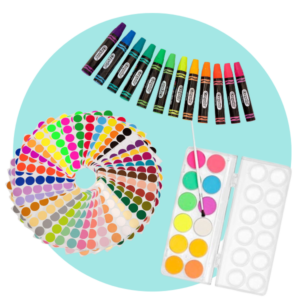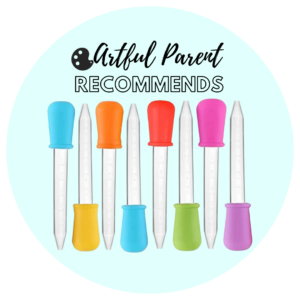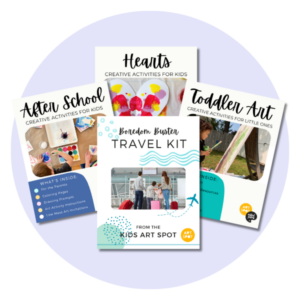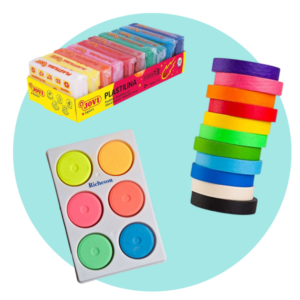Milo’s second birthday is coming up, and my mother-in-law has already asked me three times what he “needs.”
The truth? He doesn’t need anything. Our living room floor is already an obstacle course of wooden blocks, stuffed animals, and random kitchen utensils he’s claimed as toys.
But try telling that to well-meaning grandparents.
Here’s what I’ve been thinking about lately: What if the best gift we could give our kids isn’t another thing at all? What if buying less, not out of deprivation but out of intention, actually creates more space for the kind of happiness that lasts?
I know it sounds backwards in a culture that equates love with shopping carts and birthday hauls. But hear me out.
1) Too many choices overwhelm developing brains
Have you ever watched a toddler walk into a playroom stuffed with toys? They don’t settle into deep, focused play. They flit from thing to thing, picking up and discarding, never fully engaging with anything.
There’s actual research behind this. Barry Schwartz, a psychologist who studies decision-making, has noted that “learning to choose is hard. Learning to choose well is harder. And learning to choose well in a world of unlimited possibilities is harder still, perhaps too hard.”
When Ellie was three, I did an experiment. I packed away three-quarters of her toys and left just a basket of blocks, some art supplies, and a few books.
Within days, I noticed something shift. She played longer. Built more elaborate structures. Actually finished the puzzles instead of dumping them out and walking away.
Less wasn’t deprivation. It was clarity.
Kids’ brains are still developing the executive function needed to filter options and make decisions. When we flood them with choices, we’re essentially asking them to do something their neural wiring isn’t ready for yet.
Related Stories from The Artful Parent
2) Constant acquiring teaches them happiness comes from outside themselves
Every time we buy something to cheer up a sad kid or reward good behavior with a toy, we’re reinforcing a pattern: uncomfortable feeling equals new thing equals temporary relief.
It’s a pattern I see in myself too, if I’m honest. Bad day? Maybe I need new throw pillows. Stressed? Time to browse online shops.
But here’s the thing. That kind of happiness has a shelf life. The new toy is exciting for a day, maybe a week. Then it joins the pile of forgotten things under the bed, and the wanting starts again.
I’m not saying we should never buy our kids anything. But when acquisition becomes the default response to every emotion, we miss the chance to teach them that contentment, creativity, and joy can come from within.
Matt and I have started asking ourselves before any purchase: “Are we buying this because it truly adds value, or because it’s easier than sitting with a big feeling?”
Sometimes the answer is still yes to the purchase. But often, it’s not.
- You can instantly tell someone is terrified of aging when they do these 6 things obsessively - Global English Editing
- I used to think my 20s were my best years – but at 77, I’m experiencing a joy I never knew existed - Global English Editing
- 7 awkward phrases that instantly reveal you have zero social awareness - Global English Editing
3) They literally play better with less stuff
There’s something almost magical that happens when kids don’t have everything spelled out for them in plastic and batteries.
The couch cushions become a fort. The cardboard box becomes a spaceship. The stick from the backyard becomes a wand, a sword, a fishing pole, a microphone.
When Milo doesn’t have twelve different vehicles to choose from, he invents games with the two he has. When Ellie’s art supplies are limited to paper, crayons, and glue, she creates more interesting collages than when I used to overwhelm her with every craft supply from the store.
Child development experts have long understood this. Studies show that reducing the volume of toys leads to longer (and better) playtime.
Less stuff means more imagination. More problem-solving. More creativity born from constraint rather than overwhelm.
I keep a small basket in our art corner now instead of bins overflowing with supplies. The kids actually use what’s there instead of dumping everything out in search of something “better.”
4) The wanting becomes more precious than the having
Remember being a kid and circling things in the toy catalog for months before your birthday? The anticipation was almost better than Christmas morning itself.
We’ve lost that.
When kids get things constantly, a new something every grocery trip, packages arriving weekly from online orders, nothing feels special anymore. The getting becomes routine. Expected. Even boring.
But when Ellie saves her own money for something she really wants? When she thinks about it, talks about it, draws pictures of it? That wanting holds magic.
And you know what I’ve noticed? Sometimes after all that wanting and saving, she decides she doesn’t actually need it after all. The process of considering, waiting, and dreaming was what mattered.
That’s a lesson worth more than any toy.
5) Our kids mirror our relationship with stuff
If we’re constantly buying, constantly accumulating, constantly talking about what we want next, our kids internalize that as normal. As the way life works.
I grew up in a house where things were tight financially, but my mother’s answer to stress was always acquiring. Garage sales, discount stores, filling spaces with stuff that made her feel temporarily secure. I recognize that pattern in myself when I get anxious.
But I’m trying to model something different for Ellie and Milo.
When we pass by toy aisles without automatically grabbing something, we’re teaching them that stores aren’t treasure hunts where we always find prizes. When we talk about saving up for experiences, like our camping trips, instead of more things, we’re showing them what we value.
When I catch myself reaching for my phone to browse shops when I’m bored or stressed, I’m learning to reach for a book instead, or to just sit with the discomfort. Not because I’m perfect at it, but because I want them to see that happiness doesn’t require a shopping cart.
6) They learn to value what they have
There’s a wooden train set that was Matt’s when he was little. Ellie plays with it almost every day. She knows its history, knows it’s special, treats it with care.
Compare that to the plastic toys she’s gotten as party favors or impulse purchases. She barely remembers receiving them, and they break within days.
When kids have fewer things, they develop relationships with what they do have. They learn to take care of their belongings. They notice when something goes missing. They feel genuine gratitude instead of entitled expectation.
Last week, Milo’s favorite stuffed bear needed stitching after a rough play session. We sat together while I sewed it, and he watched intently, patting the bear’s head. “Better now, Mama?”
Would he have cared that much if he had twenty stuffed animals? Probably not.
Scarcity, not deprivation but intentional simplicity, creates appreciation.
7) It frees up resources for what actually matters
Here’s the practical truth: every dollar we don’t spend on plastic toys that break and clothes that get outgrown in three months is a dollar we can spend on something with lasting value.
For our family, that means a membership to the community garden where the kids have their own little plot. It means art classes at the community center that Ellie loves. It means being able to afford organic produce and keeping our home free of the conventional cleaning products that used to trigger Ellie’s eczema.
It also means less clutter, which translates to less time spent organizing, cleaning, and stepping on small plastic pieces in the dark.
And less mental load. Every item we own requires a tiny bit of our attention. Where it goes, whether it’s broken, if it needs batteries, who it belongs to.
When we buy less, we free ourselves up to be more present with our kids. To have the energy for bedtime stories and morning snuggles and spontaneous dance parties in the kitchen.
Conclusion
I won’t pretend this is easy. We live in a culture that tells us constantly that our kids need more, deserve more, that loving them means filling their rooms with stuff.
The guilt is real. The pressure from grandparents, from other parents, from our own childhood longings. It’s all there.
But watching my kids genuinely light up over a stick they found in the backyard, or spend an entire afternoon building elaborate worlds with the same set of blocks they’ve had for years, reminds me that we’re not depriving them of anything.
We’re giving them space. Space to imagine, to create, to be bored and then discover what comes after boredom. Space to learn that they already have what they need to be happy.
That’s not something you can buy at any store.










